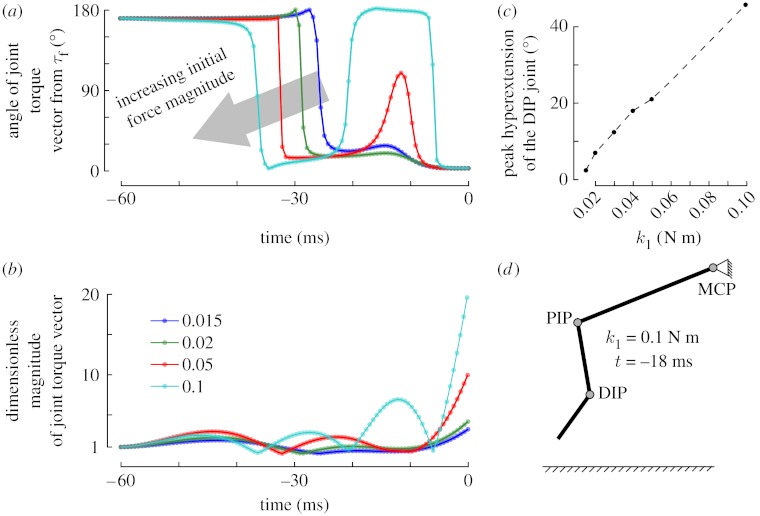Figure 5.
Transition of the joint torque vectors for increasing demands on the initial force magnitude (what we call ‘speed’). Despite a 20× range in initial fingertip force magnitude (6.6×range in k1), a perfectly accurate solution was always found, i.e. the fingertip force vector was perfectly vertically oriented upon contact and produced the required force magnitude. The orientation of the joint torque vectors and the joint angles during the transition provide some insights into this result. (a) Orientation of the joint torque vector has a ‘double dip’ for higher speed demands (k1≥0.05), something akin to a ‘corrective’ torque to optimize the finger's state upon contact. Note that this corrective action occurs even though our model has no sensory feedback. (b) Magnitude increases only after reorientation of the joint torque vector. (c) These corrective torques, however, were associated with intermediate postures that were unrealistically hyperextended at the DIP joint. As seen here, the magnitude of an unrealistic hyperextension of the DIP joint grows almost linearly with increasing speed demands, i.e. increasing k1. (d) For k1=0.1 N m, the figure shows the unrealistic finger posture attained at t=−18 ms. We show only four of six values of k1 in (a) and (b) for clarity.

